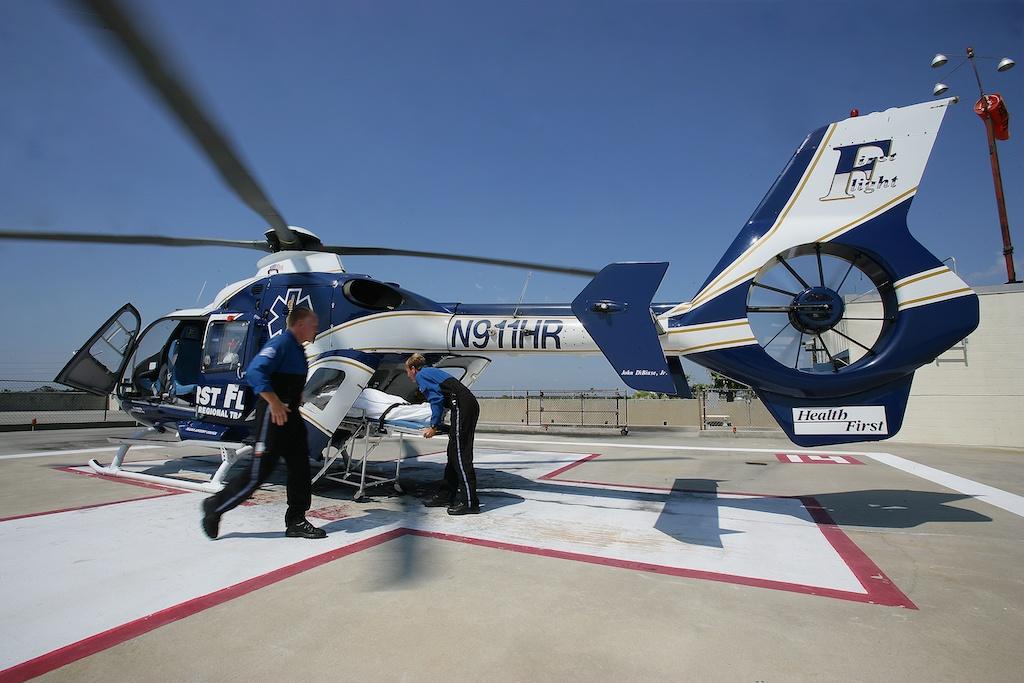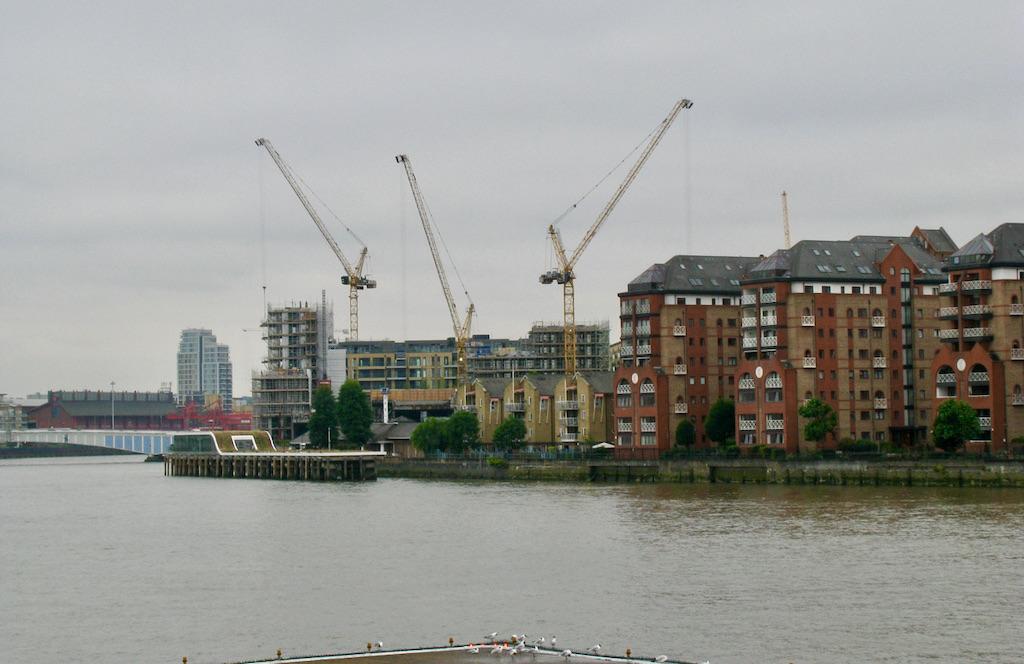
Many features of a helipad’s design must follow strict guidelines. The minimum size of the touchdown and lift-off (TLOF) area is guided primarily by the maximum rotor diameter. FAA Advisory Circular 150/5390 for Heliport Design requires a safety net, not less than 5 ft. wide from the edge of the pad (1.5 m) around the entire pad when the TLOF area is on a platform elevated more than 30 in. (76 cm) above its surroundings. The composition of the surface, proper markings, even the composition of the paint and procedures for snow and ice removal all need to conform with these specifications.
Does this sound overly obsessive? Wouldn’t snow and ice removal simply be “common sense?” Why not just toss rock salt on the helipad just like sidewalks to help melt ice? The answer is simple. You do not want to expose the skids of a helicopter to salt because it will lead to accelerated corrosion.
Turbulent Wind Environment
When winds flow around buildings in the urban environment, the air flow on the downwind side of the building is turbulent as well as containing “recirculating” airflow. If you have stood by a river bank you have seen these regions in which portions of the flow recirculate in directions completely opposite to the main flow of the river. You may have also noticed that rocks and other obstacles cause small vortices that are shed from the sharp surfaces and continue to flow downriver. The same phenomena occur with wind flow around urban buildings.
There are many ways in which this turbulent downwind wake creates hazards to aviation. The turbulent airflow can make control of an aircraft more difficult. Rapidly changing air currents make flight path control more challenging. Sudden gusts of wind and then the abrupt cessation of the gust changes the air speed of the aircraft. The comparatively small vortices can actually change the airflow over different parts of a helicopter, for example, so that the air flow over the tail rotor would be opposite of the nose. This in turn heightens the possibility of a loss of tail rotor effectiveness due to wind from an adverse azimuth.
During the site selection for a rooftop helipad in downtown Chicago, the engineering firm Landrum and Brown discovered that two anemometers installed on opposite ends of the roof of Prentice Women’s Hospital showed an average difference in wind direction of 65º. This means that the difference in wind direction was sometimes greater than 65º. Such large variation in wind direction over such a short distance is a significant challenge for safe flight operations during takeoff and landing, precisely when margins of safety are the slimmest.
Windsocks
Windsocks to show the direction and magnitude of the wind are required for a heliport. The windsock should provide the best possible color contrast to its background and be located so that it provides the pilot with valid wind direction and speed information in the vicinity of the heliport under all wind conditions. It should be carefully located so that it is clearly visible to the pilot on the approach path when the helicopter is at a distance of 500 ft. from the TLOF. It should be located outside of the safety area and should not penetrate the approach, departure or transitional surfaces.
Having accurate information of the wind in a helipad is absolutely vital and yet, the airflow complexities caused by air flowing around obstacles, nearby buildings and/or elevated helipads is far more complicated than many pilots understand. Small vortices shed from the edges of upwind buildings can abruptly change the direction of wind flow indicated by a wind sock. During one instant, the wind sock may indicate winds from one direction; moments later it can indicate winds from an entirely opposite direction.
Some might think that the placement of a windsock is a simple process. Those who have studied wind flow around buildings know that this task can be exceedingly difficult. I had the incredible learning experience of working with Thomas Corke of Notre Dame University’s Department of Engineering on a helicopter site evaluation atop a high rise building in an urban setting. Corke showed us a pictorial rendering of nearly 20 windsocks mounted at varying positions around the rooftop helipad, and each of the windsocks was pointing in different directions.
There may be no single, ideal location for the windsock. More than one windsock may be required in order to provide the pilot with all the wind information needed for safe operations. For night operations, the windsock should be internally lighted or externally illuminated to ensure that it is clearly visible.
Approach And Departure Paths

Even if you believe you have the resources to deal with the multitude of government agencies and neighborhood groups to start the process of building a rooftop helipad, other design conditions are not simple to accomplish. It requires subject matter experts who have extensive experience in their fields.
Heliports should be designed so pilots can choose the safest approach and departure path. The purpose of approach/departure paths is to provide sufficient airspace clear of hazards to allow safe approaches to and departures from the TLOF. Ideally, heliport approach-departure routes should be over waterways, beaches, parks, golf courses, industrial yards and vacant land to minimize undesirable impacts on residential developments, playgrounds, shopping districts and other highly populated areas.
A heliport should have more than one approach/departure path and the preferred flight approach/departure path should, to the extent feasible, be aligned with the predominate wind. Approach and departure paths should permit pilots to avoid downwind conditions and minimize crosswind operations. The preferred flight path should, to the extent feasible, be aligned with the predominant wind direction. Other approach and departure paths should be based on the assessment of the prevailing winds. While the advisory circular points out the prime importance of this alignment, in truth this can be a difficult planning task because the primary wind directions can vary due to a variety of reasons,including a change in weather patterns associated with the seasons, influences from local terrain and obstacles, etc.
It will also be necessary to take into account the obstructions in the vicinity of the heliport and in particular those likely to be a hazard to air navigation.
This is an added problem with operating in the vicinity of other urban structures. Not only nearby urban high rises and construction towers create hazards to navigation that can restrict options for approach and departure paths, but the air disturbances in the wakes of these structures can create recirculation zones and shed vortices from adverse azimuths that can compromise control of a helicopter.
Depending on the wind direction this can restrict a helicopter to a downwind takeoff, placing the aircraft at a considerably disadvantageous part of the performance curve.
In Considerations For Rooftop Heliports, Part 3, we address noise and operational aspects of building a heliport.
Considerations For Rooftop Heliports, Part 1: https://aviationweek.com/business-aviation/safety-ops-regulation/consid…





